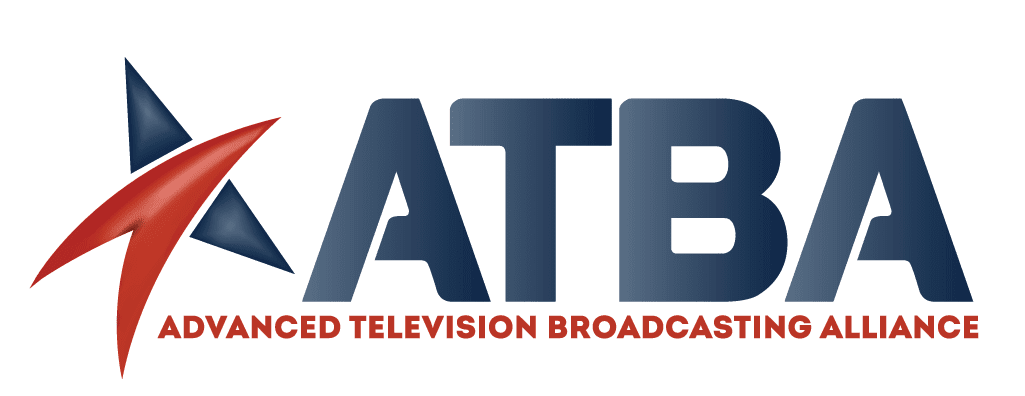The Federal Communications Commission‘s (FCC or Commission) Public Safety and Homeland Security Bureau (Bureau) reminds all Emergency Alert System (EAS) Participants,[1] Participating Commercial Mobile Service (CMS) Providers,[2] and the public that the Federal Emergency Management Agency (FEMA), in coordination with the FCC, will conduct a nationwide test of the EAS and Wireless Emergency Alerts (WEA) at 2:20 p.m. EDT on August 11, 2021, with a backup date of August 25, 2021.[3] The Bureau also reminds EAS Participants of upcoming filing deadlines associated with the nationwide test and notes ongoing Bureau efforts to promote alerting accessibility.
Filing Deadlines
EAS Participants must file Form Two, providing “day of test” data, in the EAS Test Reporting System (ETRS) on or before August 12, 2021.[4] EAS Participants must file ETRS Form Three, providing detailed post-test data, on or before September 27, 2021.[5] Additional information, including instructional videos and answers to frequently asked questions about entering data into the ETRS forms, can be found at https://www.fcc.gov/general/eas-test-reporting-system.
This year, FEMA will transmit the EAS portion of the nationwide test through a hierarchical, broadcast based distribution system, otherwise known as the “daisy chain.”[6] The purpose of this approach is to determine the capability of the EAS to deliver messages to the public in the event that dissemination via the Internet is not available.[7]
The public should be aware that full message text and multilingual messaging will not be available due to the over the air message delivery and relay used in this system of EAS message dissemination.[8]
Further, with regard to the accessibility of the test message, we note that the content of the message will not be identical for aural and visual purposes. While the televised visual EAS message text displayed will vary depending on the station, it will include, at a minimum, the Originator, Event, Location, the valid time period of the message and the local time the message was transmitted.[9] For example, the text may read: “A Primary Entry Point system has issued a National Periodic Test for all of the United States beginning at 2:20 PM and ending at 2:50 PM on AUG 11, 2021 (station id).”
This visual message will be accompanied by a longer audio message containing additional information. The audio message will state: “This is a test of the National Emergency Alert System. This system was developed by broadcast and cable operators in voluntary cooperation with the Federal Emergency Management Agency, the Federal Communications Commission, and local authorities to keep you informed in the event of an emergency. If this had been an actual emergency an official message would have followed the tone alert you heard at the start of this message. No action is required.”
The Bureau recognizes the importance of ensuring accessibility of these critical messages and acknowledges the disparity between the text and the audio message. The Bureau is working with FEMA to examine potential technical solutions that can address the differences between the audio and visual messages for future nationwide tests and other potential measures to promote greater accessibility of the EAS for all Americans, including people with disabilities.[10] The Bureau intends to open an initiative on potential measures for action by the agency this year.
EAS Participant Preparation
EAS Participants should take steps, in coordination with their State Emergency Communication Committees, in preparation for this test. This preparation would include upgrading EAS equipment software and firmware to the most recent version and ensuring that EAS equipment can receive and process the National Periodic Test code, the “six zeroes” national location code, and otherwise operate in compliance with the Commission’s rules.[11] EAS Participants are also reminded to review their State EAS Plans for monitoring assignments and to ensure that EAS equipment is accurately configured to monitor those sources.[12]
Opt-in Wireless Emergency Alert Test
Concurrent with the 2021 nationwide EAS Test, FEMA will originate a nationwide WEA test using the State/Local WEA Test category. Participation in WEA by CMS Providers is on a voluntary basis, and consumers must have a WEA-capable device in order to receive alerts. Additionally, for this nationwide test, only those subscribers who have expressly opted in to receive WEA test messages will receive the test message.[13] Participating CMS Providers are required to transmit the State/Local Test message and enable subscribers to opt in to receive it.[14] WEA messages should be accompanied by unique audio and vibration attention signals to ensure accessibility,[15] and must be preserved in a consumer-accessible format and location for at least 24 hours or until deleted by the subscriber.[16]
For further information regarding the nationwide EAS and WEA tests, contact Rosemary Cabral, Attorney Advisor, Policy and Licensing Division, Public Safety and Homeland Security Bureau, at (202) 418-0662 or [email protected]; or Christina Clearwater, Deputy Chief, Policy and Licensing Division, Public Safety and Homeland Security Bureau at (202) 418-1893 or [email protected]. For accessibility questions regarding the emergency alerting tests, contact the FCC by e-mail at [email protected], 202-418-2517 (voice) or 844-432-2275 (videophone).
-FCC-
[1] EAS Participants are those entities that are required to comply with the Commission’s EAS rules, including analog radio and television stations, wired and wireless cable television systems, digital broadcast systems, digital television broadcast stations, Satellite Digital Audio Radio Service, digital cable and digital audio broadcasting systems, and wireline video systems. 47 CFR §§ 11.2(b), 11.11(a).
[2] Participating CMS Providers are commercial mobile service providers that have elected voluntarily to transmit WEA alert messages. See 47 CFR §§ 10.10(d), (f).
[3] See Public Safety and Homeland Security Bureau Announces Nationwide Test of the Emergency Alert System on August 11, 2021 and Opens the EAS Test Reporting System for 2021 Filings, Public Notice, PS Docket No. 15-94, DA 21-680, 2021 WL 2419820 (PSHSB June 11, 2021) (Test Announcement Public Notice). In the event FEMA, in consultation with the National Weather Service, identifies severe weather conditions in some parts of the nation that may require activation of the EAS, the test will be rescheduled for the back-up date.
[4] EAS Participants are required to file “day of test” data within 24 hours of any nationwide EAS test or as otherwise required by the Bureau. 47 CFR § 11.61(a)(3)(iv)(B). EAS Participants had until July 6, 2021 to register and file ETRS Form One. EAS Participants are allowed thirty days after submission (i.e., on or before August 5, 2021) to submit any updates or corrections to their 2021 Form One filings.
[5] EAS Participants are required to file detailed post-test data within 45 days following a nationwide EAS test. 47 CFR § 11.61(a)(3)(iv)(C). Should circumstances require FEMA to conduct the test on the backup date, these filing deadlines would change, and the Bureau would release a Public Notice with those new dates.
[6] See Letter from Alfred Kenyon, Chief, Customer Support Branch, IPAWS Program Office, National Continuity Programs, Department of Homeland Security, FEMA, to Marlene H. Dortch, Secretary, FCC at 1 (May 3, 2021) (on file in PS Docket Nos. 15-94 and 15-91) (2021 FEMA National EAS Test Notification Letter). See also Review of the Emergency Alert System, EB Docket No. 04-296, Sixth Report and Order, 30 FCC Rcd 6520, 6522-23, paras. 4-6 (2015) (describing EAS architecture). In past years, FEMA has distributed the nationwide EAS test through both the broadcast-based distribution system as well as over the internet using IPAWS. The Commission’s rules require EAS Participants to be able to receive alerts from both IPAWS and the broadcast-based distribution system. See 47 CFR §§ 11.51(d), 11.56(a).
[7] See 2021 FEMA National EAS Test Notification Letter at 1.
[8] See id.
[9] 47 CFR §§ 11.33(a)(4), 11.61(a)(3).
[10] Telephone call between Antwane Johnson, Deputy Assistant Administrator (Acting), National Continuity Programs, Federal Emergency Management Agency, and Nicole McGinnis, Deputy Chief, PSHSB, FCC (July 28, 2021).
[11] See 47 CFR § 11.31(f).
[12] See 47 CFR § 11.52(d)(1) (with respect to EAS messages that are formatted in accordance with the EAS Protocol, EAS Participants must monitor two EAS sources).
[13] See 47 CFR § 10.350(c)(4). On November 1, 2016, the Commission adopted a Report and Order that amended its rules to permit emergency managers to conduct end-to-end WEA tests to the public to assess how WEA is working within their jurisdictions. See also Wireless Emergency Alerts; Amendments to Part 11 of the Commission’s Rules Regarding the Emergency Alert System, Report and Order and Further Notice of Proposed Rulemaking, 31 FCC Rcd 11112, 11154-57, paras. 65-68 (2016) (WEA R&O). The Commission also required Participating CMS Providers to provide their subscribers with the option to receive State/Local WEA Test messages, whereby subscribers must affirmatively select the option to receive State/Local WEA Test messages. Id. at 11154-55, para. 65. This is the first time FEMA has initiated a nationwide Wireless Emergency Alert using the State/Local WEA Test category. For more information on Wireless Emergency Alerts, including how to opt into test alerts, please visit: https://www.fcc.gov/public-safety-and-homeland-security/policy-and-licensing-division/alerting/general/wireless.
[14] See 47 CFR §§ 10.350(c)(1)-(4).
[15] See 47 CFR §§ 10.520, 10.530.
[16] See 47 CFR §10.500(h).









